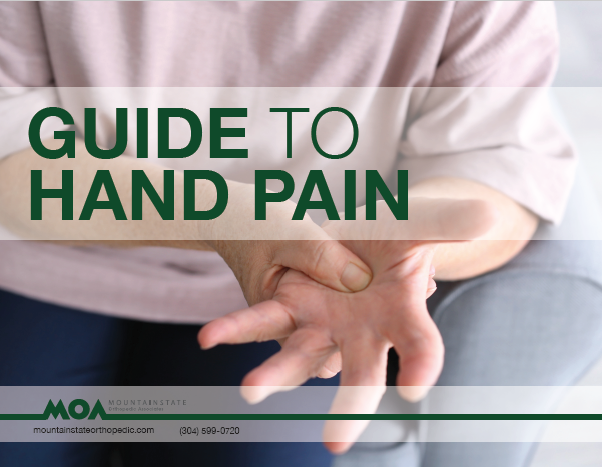
Hand Care
Your hands are your number one tool for life.
Are you experiencing Hand Pain?
Chronic joint pain affects you every day. Arthritis and joint inflammation are painful, and often debilitating. If you have altered your daily activity to accommodate hand pain, contact us today.
One of our specialists will work with you to find a treatment plan that is right for you.
Fill out the form below to learn more, or contact us to schedule an appointment with one of our physicians.
Table of Contents
About the Hand
The hand is an incredibly complex part of the body — it has a broad range of motion and is very precise in movement. We use our hands for everything we do throughout the day — work, play, exercise and more.
With 27 individual bones in each hand, about one-fourth of all the bones found in the body are in the hands. The 27 bones are categorized into three different types, organized by function:
Carpus and Wrist: the eight carpal bones make up the wrist. Ligaments hold the bones together. Metacarpus: the five bones that make up the area of the hand between your wrist and fingers
Fingers (Phalanges): the 14 finger bones make up the most movable part of the hand. Each finger has three bones, with the exception of the thumb — it only has two.
From your forearm down to your hand, there are over 30 muscles. They work together to allow you to move your wrist and hand, and spread and extend the fingers. There are also pathways in the wrist and hand for the tendons, vessels and nerves — the most common of which is the carpal tunnel. The carpal tunnel is a passageway made up of carpal bones and connective tissue that can also lead to a very common nerve compression problem (more on page three).
HOW THE HAND GRIPS
There are two ways the hand is able to grip: the power grip and the precision grip. When you carry heavy grocery bags, your hands use a power grip. This is where the object being held or carried is held in the palm of the hand. For things that require more dexterity, such as writing, the hand uses a precision grip. The precision grip allows the hand to control the grip of small objects by using the trunk and index finger like forceps.
TOUCH AND SENSATION
The hand has 17,000 touch receptors and free nerve endings in the palm. This allows the hand to transmit pressure, vibration and movement sensations. Think — when you touch something hot, you immediately pull your hand away
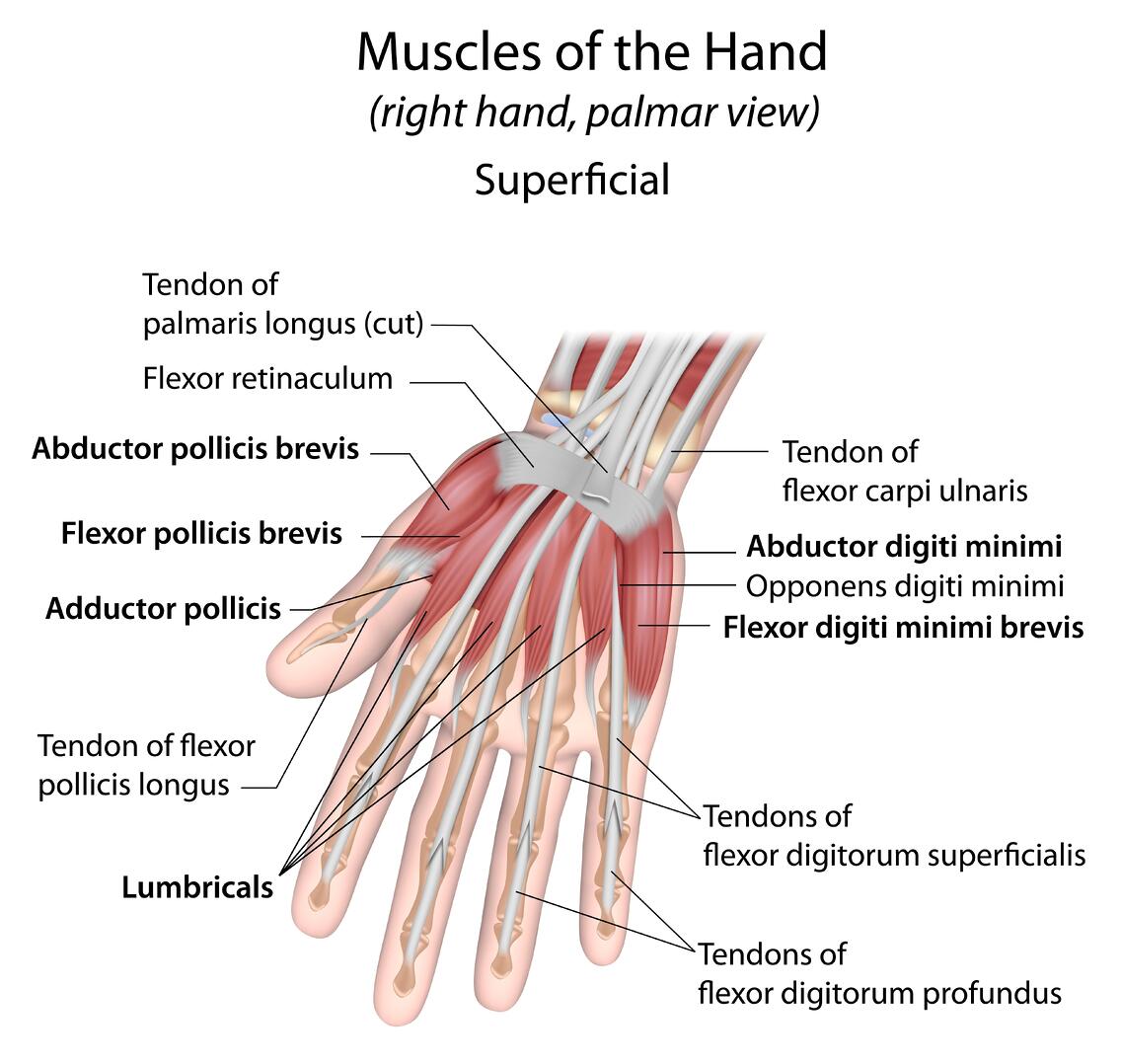
CARPAL TUNNEL
When swelling occurs in the carpal tunnel, it can put pressure on the median nerve. This can happen for numerous reasons, such as when you fracture or dislocate a joint, have swelling of the tendons or fluid that builds up during pregnancy. Diabetes, thyroid conditions and types of arthritis can also cause carpal tunnel. It’s also more common in women and people who use a repeated motion of the wrist when working (think vibrating tools or typing).
Carpal tunnel can cause pain or numbness, a tingling sensation and sometimes a weakened grip accompanied by dropping things more often. People often report an increase in symptoms at night, but daily activities like driving can also aggravate symptoms.
When you visit your doctor, they will ask you about your lifestyle and work, in addition to discussing any existing medical conditions. They may take an x-ray or order lab testing if necessary.
The discomfort caused by carpal tunnel can often be reduced without surgery. Simply modifying daily habits or taking a break from activities that can aggravate the carpal tunnel can help reduce pressure on the nerve. Your doctor may also recommend wearing a brace to reduce pressure on the nerve — you may wear this brace almost constantly or just at night. Steroid injections are also an option to reduce swelling.
Surgery is a last resort option; however, the outcomes are excellent for the patients who may require surgery to find relief from their carpal tunnel syndromes.
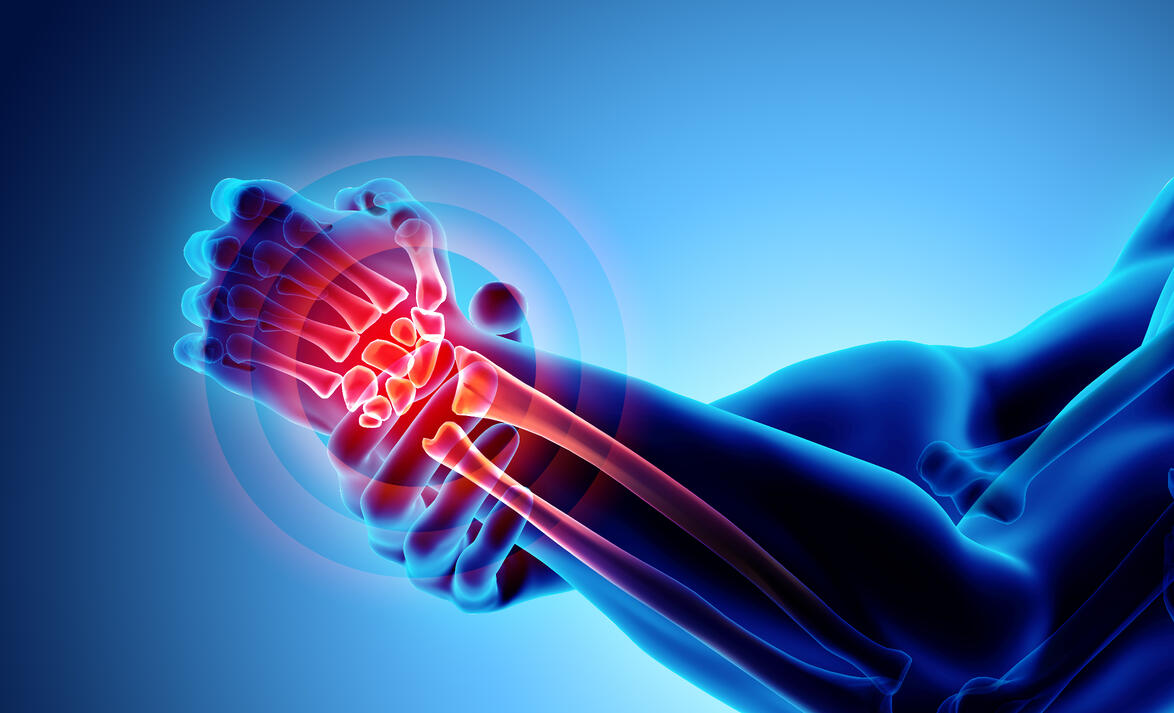
Dupuytren’s CONTRACTURE
Dupuytren’s contracture is an abnormal thickening of the tissue that sits right underneath the skin. The thickening occurs in the palm, but it can also move into the fingers, causing them to bend into the palm. It causes irregularities in the appearance of the skin called pits, bumps and cords.
The ring finger and small finger are most commonly affected, and most often, the condition is seen in men over the age of 40. When we see this, it often affects both hands; however, it doesn’t always look exactly the same in each hand.
It’s not necessarily a painful condition, but it can make it awkward and difficult to do normal things with the hands — like shaking hands with someone and washing the hands. It’s important to see a doctor as soon as you start to notice symptoms. There are options to straighten the fingers out, such as Xiaflex injections (www.xiaflex.com). Surgery is also an option and is something your doctor will discuss with you if it is an appropriate course of treatment.
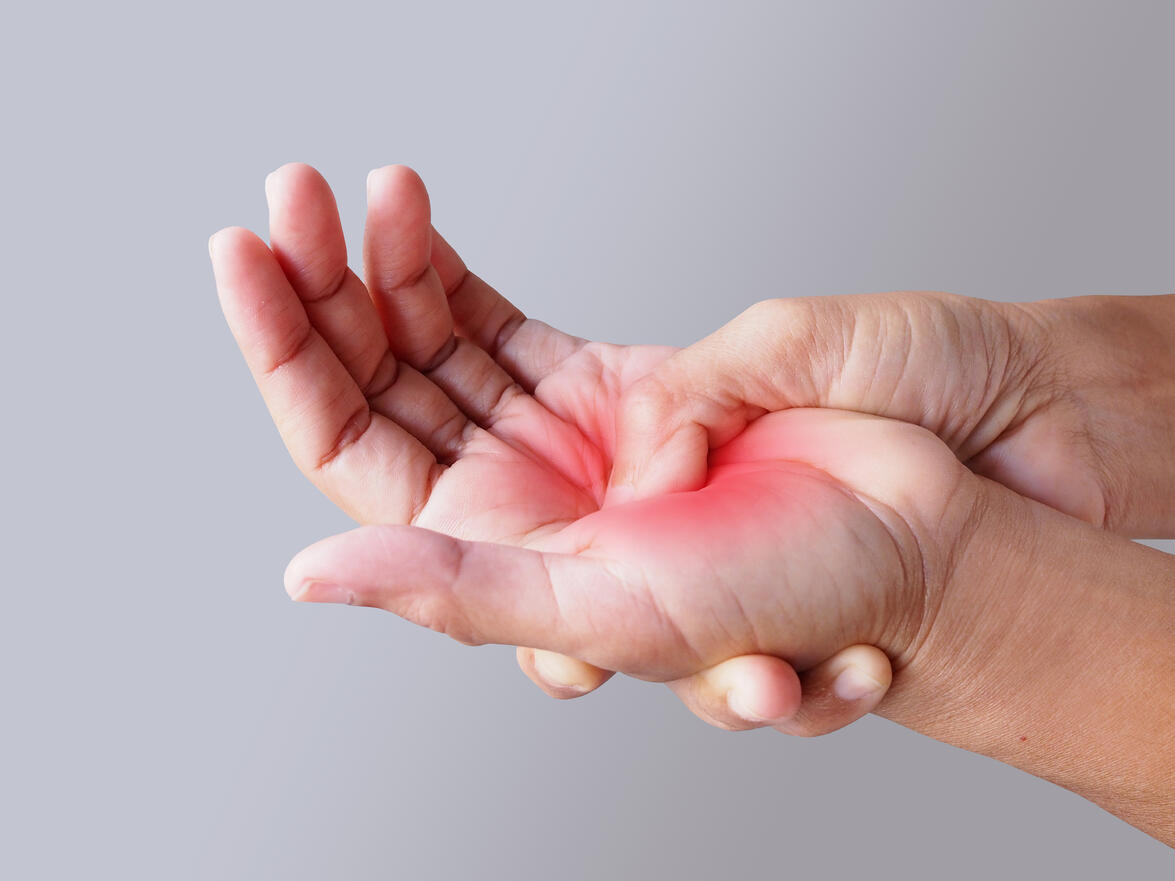
TRIGGER FINGER
Trigger finger or trigger thumb is technically called stenosing tenosynovitis. It is a condition that occurs when the tendons can no longer glide easily because the pulleys that hold them close to the bone become too thick.
The exact cause isn’t really known, although it is more common in people with diabetes, rheumatoid arthritis and gout. Symptoms of trigger finger often start at the base of the finger or thumb — the area is tender, and you may feel a lump. Sometimes you’ll notice a popping noise or experience limited movement and/or pain.
Trigger finger is treated with splints, anti-inflammatory medications and steroid injections. Your doctor will likely suggest a change in activity if it appears that something you do is aggravating the condition. Surgery is an option for cases that don’t respond to non-surgical treatment.
Arthritis
Arthritis is a common condition — it literally means “inflamed joint” — and it can affect the entire body. However, when arthritis is present in the hand, it can be especially painful due to the number of bones in the hand. The most common types of arthritis seen in the hand are osteoarthritis, post-traumatic, rheumatoid arthritis and thumb arthritis.
Osteoarthritis: Osteoarthritis is a degenerative joint disease. The smooth cartilage that covers the bones in the joints wears away over time or was injured, causing stiffness, pain, swelling and sometimes deformity.
Post-Traumatic Arthritis: Post-traumatic arthritis occurs after an acute direct trauma to the joints. It causes swelling and pain, most commonly seen in females between 50 and 70 years of age.
Rheumatoid Arthritis: Rheumatoid arthritis is an autoimmune condition that affects the cells that lubricate the joints. This means that the structures that support the joints — the tendons and ligaments — become stretched out. This makes the joints deformed and unstable, resulting in the joint cartilage and bone wearing away. This type of arthritis is most common in the hands and wrists. It’s evidenced by redness, swelling, a feeling of heat in the joint, inability to straighten/bend fingers normally and changes in the outward appearance of the joint.
Thumb Arthritis: Thumb arthritis affects the carpometacarpal (CMC) joint, which is the most common symptom of arthritis in the hand and wrist. With age, the cartilage wears away from the ends of the bones. It can cause severe swelling and pain, in addition to weakness and a decreased range of motion. This can make it hard to do daily tasks like opening bottles and jars.
It’s more common in females, those over 40 years old, people with prior injuries and people who are obese. Thumb arthritis can cause severe damage, so it’s important to see a doctor as soon as possible. Your doctor may recommend a splint, medications, injections or a combination of all three. Surgery is a last resort; however, joint fusion, repositioning the bones, removing a bone or replacing the joint are all effective options with strong outcomes for a reduction in pain.
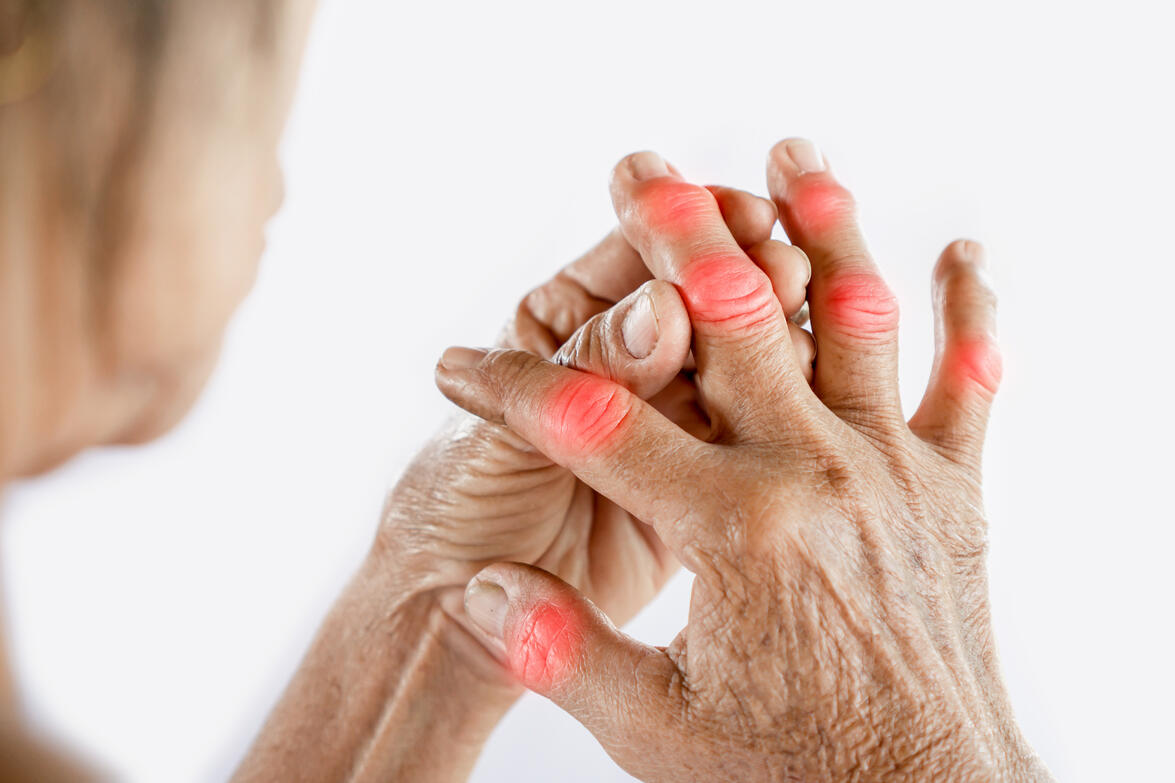
SURGERY AT MOA
At MOA, we only recommend surgery if we think it is absolutely necessary. The main surgeries recommended for hand issues are:
Carpal Tunnel Release: where the surgeon cuts through the carpal tunnel ligament to make more space for the nerves and tendons, relieving pressure and pain.
Trigger Finger Release: the surgery widens the opening of the tunnel so that the tendon can slide through it with more ease, reducing the pain.
Joint Fusion: where the bones in the affected joint are fused permanently — this relieves the pain in the joint, but means that it has no flexibility.
Osteotomy: the bones are repositioned to help correct deformities.
Trapeziectomy: one of the bones in the thumb joint is removed with tendon interposition.

HOW WE CAN HELP
Mountainstate Orthopedic Associates is one of the region’s leading orthopedic practices. We take pride in the education and experience that each of our doctors holds.
From your initial appointment to the conclusion of your treatment, we strive to keep you informed and active in the decision-making process. It’s always our policy to be conservative with our course of treatment, only recommending surgery if it is truly needed.
We also seek to be minimally invasive in our treatments, reducing the amount of time a patient is in the hospital. With many of our surgical treatments, patients are home the same day of surgery.
Get back to everyday tasks!
In our “Guide to Hand Pain” you will learn about:
- carpal tunnel syndrome
- trigger finger
- arthritis
- surgery options
"*" indicates required fields
